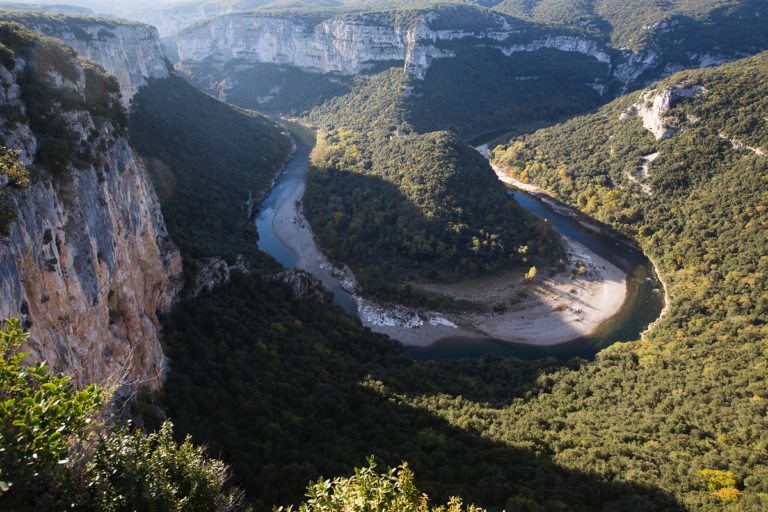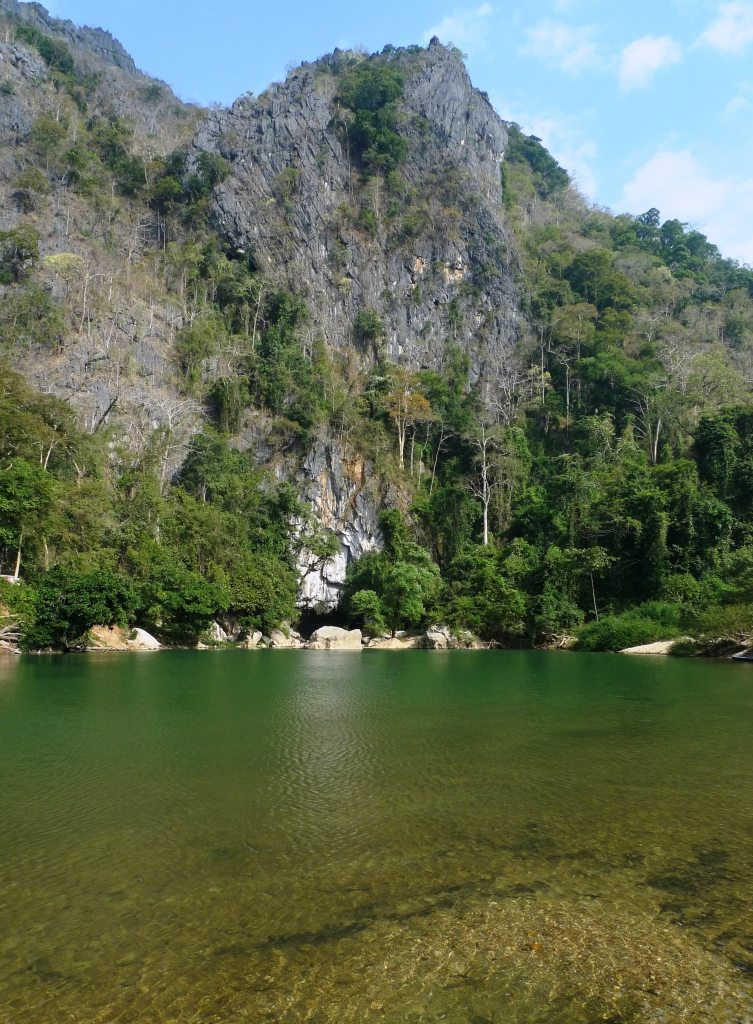Classification : National natural reserve, classified site, registered site, Natura 2000 site, Prefectural Protection Order for Biotope, Sensitive Natural Area, Large site in France
Managing Organization : Syndicate of Ardèche Gorges Management – 17 place du couvent 07700 Saint-Remèze – 0033/(0)4 75 98 77 31
Presentation :
At the interface between the Vivaroise Cévennes, the lower Ardèche and the Rhône valley, at the crossroads of various climatic influences and in a contrasting geological and topographic context, this territory shelters a natural heritage whose interest is linked both to the diversity originality of natural habitats and species. The complex formed by the Pont d’Arc and the Ardèche gorges offers a monumental landscape made up of a river, cliffs, lawns and holm oak forests, housing an exceptional biological, geological and archaeological heritage.
In order to preserve these heritages and allow their development, large areas of the site have been classified as protected areas (8,000 ha), today managed by the Syndicate of Management of the Ardèche Gorges (SGGA), the SGGA thus ensures territorial coherence in the management of natural areas and promotes the consideration of environmental issues in territorial development projects.
Scientific or educational interests :
Defined by the management documents of the various protected sites (Reserve Management Plan, Single Natura 2000 Management Document / SNA), multiple studies of biodiversity and the functionalities of the main mechanisms constituting this set have been carried out or are in the process of being programming. The improvement of knowledge allows the manager to define the directions of management and educational mediation. Five major ecosystems make up the landscape of the Ardèche gorges :
The forest : dominant habitat in the gorges and on the adjoining plateau, it was the subject of a state of conservation assessment (PSDRF), protocol deployed over approximately 1500 ha (approximately 280 monitoring platforms), a pedologic study and soil fauna. Upcoming study : Monitoring / impact of wild ungulates, hunting practices, and global inventory of mammals, mycology inventories.
The cliffs : they present fragile and very little disturbed habitats, sheltering a specific flora particularly adapted to the conditions of drought : Alysson with large fruits, Juniper of Phenicia, Asplenium of Petrarch, but also a remarkable avifauna : the Eagle of Bonelli (2 peers), the Egyptian Vulture (5 peers), the Eagle Owl, the Peregrine Falcon, the White-bellied Swift. Most of these species are subject to continuous monitoring and conservation measures such as quiet areas.
Cavities : The Gorges of the Ardèche have a very high density of karst cavities, whose morphogenesis provides information on the formation of the canyon, in relation to the river. A privileged area of study for geomorphology, karstology and hydro-karstology, the site also remains essential for biospeleology (site of major importance for the conservation of bats and invertebrates mainly). A methodology carried out by the manager of the Reserve makes it possible to study the state of conservation of the cavities, with a multi-criteria approach. Finally, many cavities are of interest for archeology and paleontology. All these stakes imply the implementation of rules specifying the access modalities.
Open environments : Present at the foot of the ledge, on the edge of a cliff or on sandy dunes, the garrigues and lawns are remarkable habitats for their diversity and originality. Particularly rich flora and fauna express themselves in these environments with often restrictive environmental conditions. In addition, the conservation of these environments requires close monitoring of their evolution and sometimes the intervention of S.G.G.A. to control the dynamics of closure or colonization by invasive exotic species. Beyond the gorges, the massive Dent-derez and the Ibie valley are of great interest for the restoration and maintenance of open environments, on which the S.G.G.A. has led to the resumption of pastoralism, a human-nature interaction essential for maintaining a unique biodiversity.
The river : Subject to a regime of light rains over the year but punctually intense (Cévennes episode), the Ardèche is a hydrologically very dynamic river, the passage of which through the gorges implies deep changes with each flood fall (modification of the banks and the bed with significant sediment transport and wrenching of the river flora). Biologically, it hosts an endemic and threatened ichthyofauna, composed of species such as the Apron from the Rhône, the Alose feinte from the Rhône. The European Otter and European Beaver are also present and tracked by the SGGA.The study of the impact of summer canoe attendance is a major concern (pollution, degradation, disturbance, etc.) in order to define the management measures that should be implemented to limit the negative effects.
Thematic key words : archeology, biology, botany, chiropterology, climatology, ecology, entomology, herpetology, forest, free evolution, scrubland, lawns, geomorphology, natural space management, hydrogeology, hydrology, ichthyology, impact on tourist numbers, karstology, ornithology , mammalogy, bat site protection, paleontology, pastoralism, invasive plants
Keywords typology of sites : natural non-instrumented cave, natural instrumented cave, fitted out cave, canyon – gorge, karrens, panorama reading landscapes, archaeological site, river, Riparian forest, agricultural or pastoral area, mediation area.
Access modalities :
To be defined with the manager (S.G.G.A.) according to the areas visited and the period of the visit.
Possible support : Depending on the themes and study sectors, educational projects (studies, work sites, etc.) can be planned in collaboration with the project managers, curator and reserve guards. For a “discovery” approach to the site, the intervention of nature animators is also possible.

